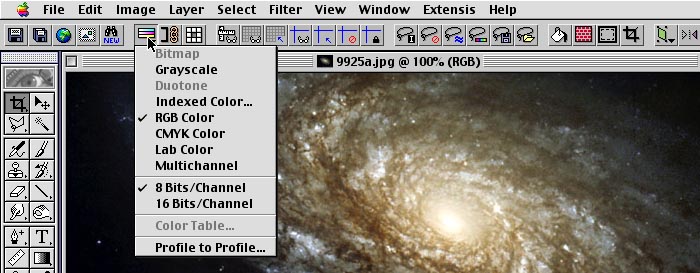Search Engine Strategies New York
Published 20 years, 6 months pastTalking with attendees and hanging out with the speakers at Search Engine Strategies was quite fascinating.
In the first place, they’re all pretty fascinating people, from where they’ve been to what they’re like now. In the second place, they’re all working in a field that doesn’t really interest me, except in indirect ways. A lot of the “white hat” search engine friendliness has to do with strong text copy, building traffic, and all that good stuff. But to spend my days picking apart search engine behavior? Not interested.
Of course, a lot of people would find what I do eye-wateringly boring, so I’m not casting stones here. Just saying that it’s interesting to spend time with people who are smart, funny, motivated, and gladly doing something very different from what I’m used to doing.
That said, I observed some interesting differences between the search engine crowd and the Web design/standards crowd.
-
There’s a dark side to the search engine business that just doesn’t exist in the standards crowd. The “black hat” SEOs, the ones who are comment spamming and keyword stuffing and link farming, don’t just lurk in the shadows. They’re right up front, sitting on panels and buying booths in the exhibit hall (not to mention doing a little in-person spamming). They don’t pretend to be anything but what they are. The honesty is refreshing, but it’s something that doesn’t have a direct analogue in Web design. The closest we get is coding to a specific browser, and that isn’t evil so much as it is amateurish and short-sighted. I don’t think there’s really any comparison.
The existence of that dark side creates an entirely different dynamic in the search engine field. People are always watching to see if someone’s white hat is covering up a black hat, to see who’s shifted from one camp to another. From what I heard, people have gone both directions; some black hats have gone to white over time. And vice versa.
This fact also seems to have created a gossip stream that completely dwarfs anything I’ve ever encountered in the standards design field.
-
In a similar vein, there’s an incentive to keep one’s knowledge to oneself in the search engine business. Suppose you’ve uncovered something about search engines that nobody else has figured out. That’s a competitive advantage, and there’s a financial incentive to keep it to yourself.
In the standards design field, it’s almost the other way around. If you come up with a new technique, you’re better off publishing it and adding to your reputation. You could keep it to yourself, of course, and that would stay secret until the first time you used it on a public site. At that point, the secret will be there for anyone who views source to figure out and use for themselves. Writing it up instead and sharing it with the world adds to your reputational capital, which might lead to more work—so there’s a financial incentive to share.
That’s not to say that everything search engine experts uncover is kept secret: they do plenty of publishing and sharing, and consultants in the field are constantly referring clients to each other as needs change. That’s sort of a flip side to what I’ve observed in the standards design field, where referrals seem to be (comparatively) infrequent. I’m not complaining, mind you. Just observing. But when someone creates a unique approach, it’s more likely to benefit them by being held close to the chest.
-
The field is dominated by the search engines. Whatever they do, the experts have to adjust to keep up. If Google alters its algorithm, a top-ranked site can drop to 100th place in an instant, and a ninth-page site can vault to the first results page. The playing field is always shifting, always in flux. Slow flux, but flux nonetheless. It’s actually a lot like Web design was back in the late 1990s, when browsers were updating their rendering engines on a regular basis, instead of in cycles that can be reasonably measured in fractions of decades.
So there’s the threat that today’s winning strategy is tomorrow’s loser. In the standards design space, not really the case; or if it is the case, it’s only on much longer time scales. Sure, CSS will likely be a discarded relic some day, but it’ll probably be quite a while—several years at the very least. Comment spamming could become obsolete next week, were the engines to figure out a way to programmatically detect and penalize it. (
nofollowdoesn’t quite count, but it’s a start.) -
On a related note, there’s a lot more mobility in the search engine space. People work as independent SEOs, then go to work for a search engine, then shift to an SEO firm, leave that to work for a large corporation… and so on. Not everyone, of course, but enough to add lots more grist for the gossip mill. In the standards design space, most of the leading names are working for themselves, and show few signs of changing.
-
The last observation is perhaps the one that drives everything that I’ve mentioned: the money. There’s a lot of money on the table in SEO, way more than in standards design. Sure, a big design job can be worth many thousands of dollars. An effective SEO can make many more thousands, possibly millions if he or she gets the right job. They can increase a company’s traffic, and potentially their revenue, by large percentages.
Certainly, standards design can save companies money, and it can increase revenue by making a site more responsive due to smaller page weights. That’s useful, and it’s important. But the money being thrown around on SEO is… well, it’s a lot.
Lest anyone get the wrong idea, none of this is meant to be a condemnation. Sure, the spammers are loathsome parasites, but there are a lot of SEOs who aren’t spammers. They get companies better rankings through the basics I mentioned before. In a lot of ways, they seem to be content, usability, and community-building consultants all rolled up into one. Those are all useful, needed services, and it’s kind of interesting to me that all those things are hiding behind the term “search engine optimization”. Well, not hiding, exactly. You see what I mean, though, right?
The last observation is more personal: it was quite an experience attending a conference where I was largely unrecognized. There were developers there who knew my name, and who were on the standards bandwagon, but the majority of attendees were not developers and had never heard of me, or Zeldman, or Shea, or Bowman, or any of the other names known in our field. Which is only to be expected: I had never heard of most of the big names in their field. So I was largely an outsider, and that was a refreshing change of pace. It served as a (possibly necessary) ego check, and let me look at the Web from an entirely new angle.
So my thanks to Danny, Chris, Grant, Shari, Amanda, Tim, Matt, and the other folks who helped orient me to this new arena, discussed points of common interest and divergent aims, and made sure I didn’t feel too terribly out of place.

